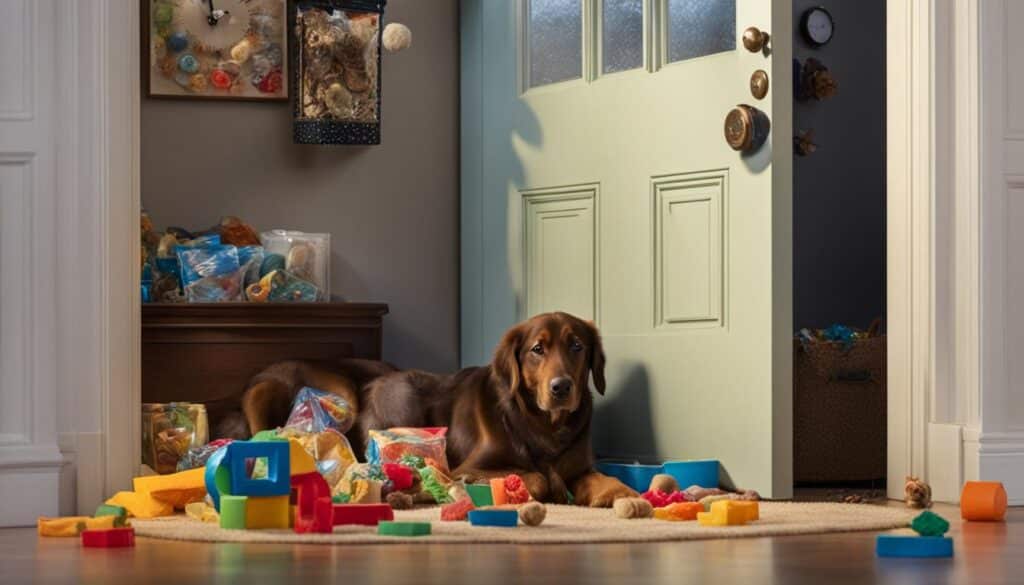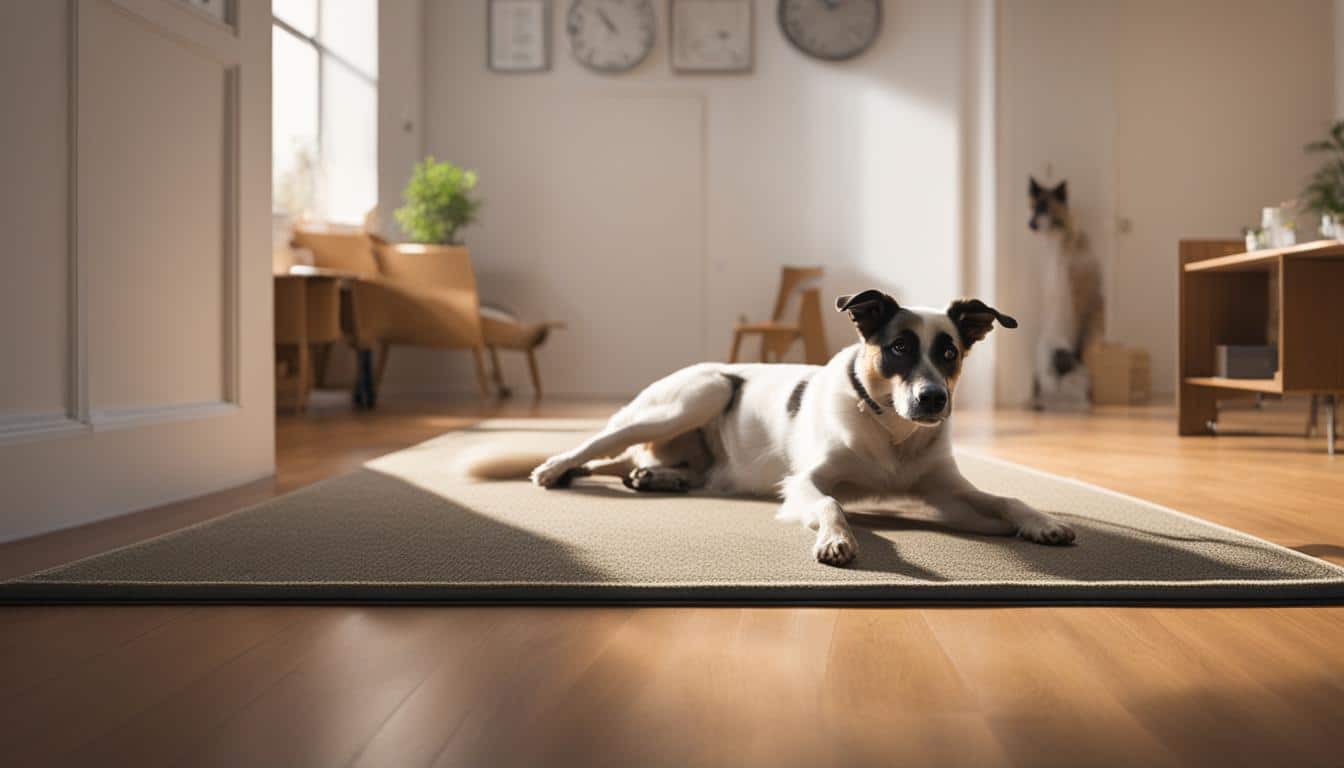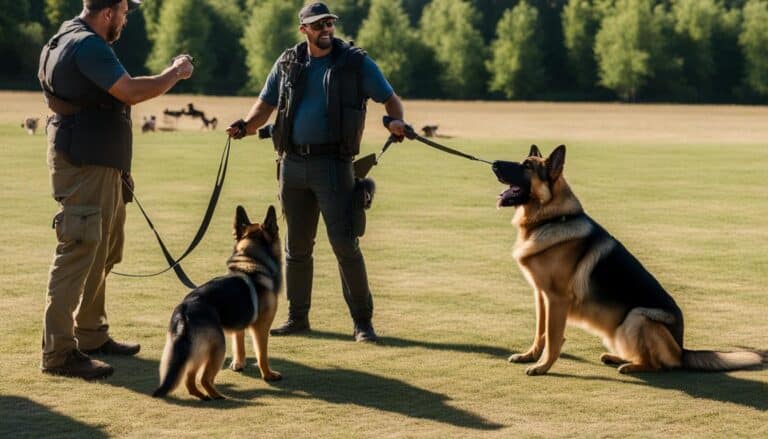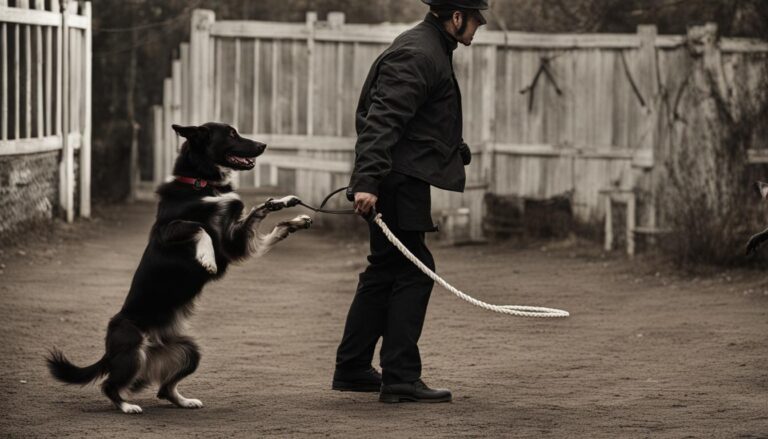How to Train a Dog with Separation Anxiety
Is your dog struggling with separation anxiety? If your furry friend becomes anxious or distressed when left alone, it’s essential to address this issue and help them feel more comfortable and confident when you’re not around. In this article, we’ll provide you with practical tips and techniques on how to train a dog with separation anxiety. With patience and consistency, you can help your dog overcome their fears and develop healthier behaviors.
Separation anxiety in dogs can result in disruptive and destructive behavior, such as excessive barking, chewing, or attempts to escape. By understanding the causes and symptoms of separation anxiety, you’ll be better equipped to support your dog through their training journey. We’ll also explore effective methods for treating separation anxiety, including counterconditioning and desensitization techniques.
Additionally, we’ll share essential tips and exercises to incorporate into your training routine. From establishing baselines for alone time to creating a safe and comforting space for your dog, these strategies will help alleviate their anxiety and promote positive behavior.
It’s important to rule out any underlying medical factors that may contribute to your dog’s separation anxiety. We’ll discuss the significance of consulting with a veterinarian to ensure your dog’s overall health before focusing on training specific to separation anxiety.
Lastly, we’ll showcase personal experiences and success stories from dog owners who have successfully trained their dogs with separation anxiety. These stories can provide inspiration and guidance as you embark on this training journey with your own furry companion.
Training a dog with separation anxiety is a process that requires patience, understanding, and consistency. With the right techniques and a commitment to your dog’s well-being, you can help them overcome their anxieties and develop a healthier relationship with being alone.
Understanding Separation Anxiety in Dogs
Dogs can experience separation anxiety, a condition in which they become distressed when separated from their guardians. This anxiety can manifest in various distress behaviors like drooling and excessive anxiety. Separation anxiety can also lead to destructive behaviors, as dogs attempt to prevent their guardians from leaving or express extreme escape attempts resulting in self-injury or damage to the household.
Recognizing the symptoms of separation anxiety is crucial to effectively address and manage this issue. Common signs include urination and defecation, excessive barking and howling, destructive chewing, escaping, and pacing. By understanding the underlying causes of separation anxiety, such as changes in residence or schedule, you can adopt appropriate training techniques and implement solutions to alleviate your dog’s distress.
To tackle separation anxiety in dogs, it’s essential to provide a supportive and comforting environment. Using positive reinforcement training techniques, you can gradually help your dog adapt to being alone. Implementing counterconditioning exercises, where your dog associates being alone with positive experiences, plays a vital role in the training process.
By creating a safe and designated space for your dog while you’re away, and providing items that smell like you to comfort them, you can help reduce their anxiety. Monitoring their behavior through camera systems can also help identify triggers that can be addressed during training sessions. Consistency and patience are key when training a dog with separation anxiety, ensuring a positive and gradual progress towards overcoming their distress.
Treating Separation Anxiety in Dogs
When it comes to treating separation anxiety in dogs, the key is to help them develop a positive association with being alone. This can be achieved through a technique called counterconditioning, which involves pairing being alone with enjoyable experiences.
For dogs with mild separation anxiety, one effective counterconditioning method is to provide them with a puzzle toy stuffed with food. This not only keeps them occupied, but it also creates a positive association with being alone. As they engage with the toy and receive treats, they will start to see being alone as a rewarding experience.
For more severe cases of separation anxiety, a desensitization and counterconditioning program is recommended. This involves gradually exposing the dog to being alone for longer periods of time, starting with short intervals and gradually increasing the duration. During these periods of alone time, it is important to provide positive experiences such as giving them a special treat or engaging them with a favorite toy.
Consistency and patience are crucial when training a dog with separation anxiety. It takes time for them to learn that being alone is not a threat, and that they can cope with it. It is important to avoid punishment or scolding, as this can worsen the anxiety and make the training process more difficult.
Remember, treating separation anxiety requires a compassionate and understanding approach. With proper training techniques and patience, you can help your dog overcome their separation anxiety and learn to cope with being alone.
Coping with separation anxiety is not just important for your dog’s well-being, but it can also bring peace of mind for you as a pet owner. By following these training techniques and strategies, you can help your furry friend feel more comfortable and secure when you’re not around.
Tips for Training a Dog with Separation Anxiety
When it comes to training a dog with separation anxiety, there are several tips that can help you effectively manage and alleviate their distress. By following these guidelines, you can establish a structured routine and create a supportive environment for your furry friend.
- Establish a baseline: Start by determining how long your dog can be left alone without exhibiting signs of stress. This will serve as a starting point for your training plan, allowing you to gradually increase the duration of alone time.
- Randomize departure cues: Dogs with separation anxiety often respond to specific cues indicating that their guardian is about to leave. To reduce anxiety, vary your departure routine by picking up your keys or putting on your shoes at random times throughout the day, without actually leaving.
- Avoid excitement when returning: When you come home, it’s essential to remain calm and composed. By refraining from high-energy greetings, you can help your dog understand that departures and returns are normal parts of their daily routine.
- Provide familiar scents: Leaving an item with your scent, such as a shirt or blanket, can provide comfort to your dog while you are away. This familiar scent can help alleviate their anxiety and create a calming environment.
- Create a safe space: Set up a designated area where your dog can feel safe and secure when left alone. This can be a cozy crate or a specific room in your home. Make sure to include their favorite toys, blankets, and a comfortable bed to further enhance their sense of security.
- Monitor triggers through a camera: Using a camera to observe your dog’s behavior while you’re away can help you identify specific triggers that may lead to anxiety. By understanding these triggers, you can address them directly during your training sessions.
- Stay calm and confident: Dogs are highly adept at sensing their owner’s emotions. Maintaining a calm and confident demeanor during departures and returns can have a positive impact on your dog’s behavior and help them feel more secure.
By incorporating these tips into your training routine, you can help your dog overcome separation anxiety and create a positive association with being alone. Remember to be patient, consistent, and understanding throughout the process, as it may take time for your dog to adjust. With your love and guidance, your furry friend can learn to manage separation anxiety and thrive in your absence.

Addressing Medical and Behavioral Factors
Before embarking on separation anxiety training for your dog, it is crucial to address any potential underlying medical issues that may be contributing to their behavior. These medical factors can include incontinence caused by medical problems, medications that increase urination, or other behavior problems such as submissive or excitement urination, or urine marking. It is essential to consult with a veterinarian to ensure that any medical issues are properly diagnosed and treated before focusing on separation anxiety training.

By ruling out medical problems as the cause of your dog’s separation anxiety, you can focus on implementing effective training techniques to help your furry friend overcome their anxiety and develop healthier coping mechanisms. Remember, understanding the root cause of your dog’s behavior is crucial for their overall well-being and training success.
Personal Experiences and Success Stories
If you are struggling with separation anxiety in your dog, take heart in knowing that many dog owners have found success in training their furry friends. Through a combination of positive reinforcement techniques and patience, they have been able to make significant progress in curing separation anxiety in their dogs.
These success stories can serve as inspiration and guidance as you embark on your own journey to help your dog overcome separation anxiety. It is important to remember that every dog is unique, so what works for one may not work for another. However, with dedication and consistency, you can manage and improve your dog’s separation anxiety.
Take comfort in the fact that you are not alone in this struggle. Many dog owners have faced similar challenges and have come out on the other side with happier, more confident dogs. By sharing their stories, they offer a sense of hope and reassurance to those experiencing the same difficulties.
So don’t give up! With the right training methods and a belief in your dog’s ability to overcome separation anxiety, you can create a positive and peaceful environment for both you and your furry companion.




